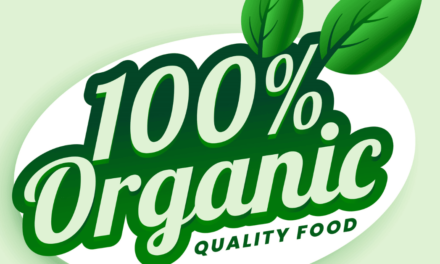Mitigating the effects of pests in rice cultivation requires an integrated approach that combines cultural, biological, mechanical, and chemical methods to protect crops while maintaining sustainability. Integrated Pest Management (IPM) strategies are particularly effective, as they reduce pesticide reliance, minimize environmental impacts, and promote long-term pest control. Here’s how farmers can mitigate pest-related issues in rice cultivation:
1. Integrated Pest Management (IPM)
- Overview: A holistic approach combining multiple pest control methods to manage pest populations effectively.
- Benefits:
- Reduces chemical pesticide use.
- Minimizes environmental and health risks.
- Delays pest resistance development.
2. Cultural Practices
- What They Are: Techniques that modify farming practices to prevent or minimize pest infestations.
- Key Practices:
- Timely Planting and Harvesting:
- Synchronize planting within a region to break pest life cycles.
- Harvest on time to reduce grain damage by pests like stem borers.
- Crop Rotation:
- Alternate rice with non-host crops (e.g., legumes) to disrupt pest life cycles.
- Water Management:
- Use alternate wetting and drying (AWD) to manage pests like root-knot nematodes and golden apple snails.
- Field Sanitation:
- Remove plant residues and weeds that harbor pests.
- Clean bunds and irrigation channels regularly.
- Timely Planting and Harvesting:
3. Biological Control
- What It Is: Using natural predators, parasites, and pathogens to manage pest populations.
- Key Agents:
- Predators:
- Spiders, dragonflies, and damsel flies control pests like leafhoppers and planthoppers.
- Parasites:
- Trichogramma wasps parasitize pest eggs.
- Pathogens:
- Fungi (e.g., Beauveria bassiana) and bacteria (e.g., Bacillus thuringiensis) infect and kill pests.
- Predators:
- Benefits:
- Environmentally friendly and sustainable.
- Long-lasting pest control without chemical inputs.
4. Mechanical Control
- What It Is: Physical removal or destruction of pests.
- Techniques:
- Hand-Picking: Remove visible pests like egg masses or snails manually.
- Light Traps: Attract and capture pests like moths during the night.
- Sticky Traps: Catch planthoppers and other flying pests.
- Field Flooding: Submerge fields to control soil-borne pests like stem borers.
- Benefits:
- Reduces pest populations without chemicals.
- Cost-effective for smallholder farmers.
5. Resistant Rice Varieties
- What They Are: Rice cultivars bred to resist or tolerate pest attacks.
- Examples:
- Varieties resistant to brown planthoppers, stem borers, or bacterial blight.
- Varieties like IR64 and Swarna for pest-prone regions.
- Benefits:
- Reduces reliance on pesticides.
- Provides a cost-effective, long-term solution to pest problems.
6. Chemical Control (Selective Use)
- What It Is: Application of pesticides to manage severe pest outbreaks.
- Best Practices:
- Use pesticides as a last resort, following IPM guidelines.
- Choose specific, eco-friendly pesticides that target pests with minimal harm to beneficial organisms.
- Rotate chemicals with different modes of action to prevent pest resistance.
- Common Chemicals:
- Insecticides for planthoppers (e.g., neonicotinoids) or stem borers (e.g., pyrethroids).
- Molluscicides for snails.
- Warning: Overuse can lead to pest resistance, residue issues, and environmental harm.
7. Pheromone Traps and Attractants
- What They Are: Synthetic pheromones to attract and trap pests.
- Applications:
- Monitoring: Detect pest population levels to time interventions.
- Mass Trapping: Reduce pest numbers by capturing adults before reproduction.
- Examples:
- Pheromone traps for rice stem borers and leaf folder moths.
- Benefits:
- Non-toxic and highly targeted.
- Reduces the need for broad-spectrum pesticides.
8. Habitat Management
- What It Is: Modifying the environment to reduce pest habitats and encourage natural predators.
- Techniques:
- Planting Trap Crops: Use alternate crops like mustard or maize to attract pests away from rice.
- Bund Planting: Grow flowering plants like marigolds on bunds to attract beneficial insects.
- Maintain Vegetation Diversity: Increase habitat for natural enemies like spiders.
- Benefits:
- Promotes biodiversity.
- Provides sustainable pest control.
9. Early Pest Detection and Monitoring
- What It Is: Regularly inspecting fields for pest presence and damage.
- Tools:
- Field Observations: Look for egg masses, larvae, or damage symptoms.
- Light and Sticky Traps: Monitor flying pest populations.
- Mobile Apps and Technology: Use pest identification and advisory tools like IRRI’s “Rice Doctor.”
- Benefits:
- Enables timely interventions to prevent pest outbreaks.
- Reduces unnecessary pesticide applications.
10. Training and Farmer Education
- What It Is: Equipping farmers with knowledge of pest identification, prevention, and control.
- Key Programs:
- Farmer Field Schools (FFS) for hands-on IPM training.
- Workshops on pesticide safety and biological control techniques.
- Benefits:
- Empower farmers to make informed decisions.
- Encourages adoption of sustainable practices.
11. Managing Pesticide Resistance
- What It Is: Rotating control methods to prevent pests from becoming resistant to treatments.
- Strategies:
- Alternate between different classes of pesticides.
- Use non-chemical methods to reduce selection pressure.
- Follow recommended doses and intervals for pesticide applications.
- Benefits:
- Ensures long-term effectiveness of pest control measures.
12. Addressing Specific Rice Pests
- Examples of Targeted Control:
- Brown Planthopper (BPH):
- Avoid excessive nitrogen fertilizer, which attracts BPH.
- Use resistant varieties or biological controls like predatory spiders.
- Stem Borer:
- Destroy crop residues to remove overwintering pests.
- Use pheromone traps or natural enemies like Trichogramma wasps.
- Golden Apple Snail:
- Hand-pick snails and crush egg masses.
- Use molluscicides sparingly and only in severe infestations.
- Brown Planthopper (BPH):
13. Climate-Smart Pest Management
- What It Is: Adapting pest control strategies to changing climatic conditions.
- Techniques:
- Monitor pest migration patterns affected by temperature and rainfall shifts.
- Adjust planting schedules to minimize pest risks during favorable weather conditions.
- Benefits:
- Reduces pest outbreaks linked to climate variability.
- Promotes resilience in rice production systems.
Conclusion
Mitigating pest effects in rice cultivation involves a balanced combination of preventive and curative measures, emphasizing sustainability and long-term effectiveness. By integrating cultural practices, biological controls, and selective chemical use, farmers can protect their crops while preserving the environment and beneficial organisms. Ongoing education and adoption of modern tools and technologies will further strengthen pest management in rice farming.
Hashtags
#OrganicFarming #NaturalPestControl #GreenAgriculture #FarmersOfInstagram #RiceHarvest #InsectManagement #EnvironmentallyFriendly #PrecisionFarming #PesticideFree #HealthySoil #SustainableDevelopment #FarmingCommunity #RiceProduction #InnovativeFarming #SustainableSolutions #PestManagementStrategies #RiceFields #SustainableFood #Agroecology #SustainableLivelihoods









